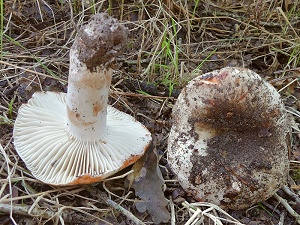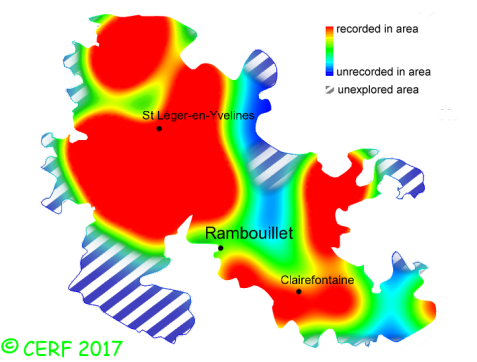| Russula nigricans Fr. |
|
|
|
|
|
|
The cap is brown to black; its margin is smooth. The cap surface is smooth, not viscid nor sticky. The stem is grey-white then black, without ring. The flesh is turning red, then black when exposed to air; its taste is mild; the odour is faint, fruity or of cooked lobster; its texture is grainy (breaking like a chalk stick). The gills are white to black, adnate to emarginate, distant . The spore print is whitish to pale cream. This species is mycorrhizal. It grows on the ground, in broad-leaved and coniferous woods, with oak, beech. The fruiting period takes place from July to December.
Chemical tests : flesh becoming pink then greenish when in contact with iron sulphate; quick and intense blue-green reaction to Ga´ac; vinaceous brown to phenol; no reaction to sulpho-vanillin. Distinctive features : distant and thick gills, forked and fragile; flesh reddening quickly when exposed to air before blackening; stem blackening when touched Russula nigricans is frequent and very widely present in the forest of Rambouillet, and is very frequent, more generally speaking . | ||
|
page updated on 14/01/18

